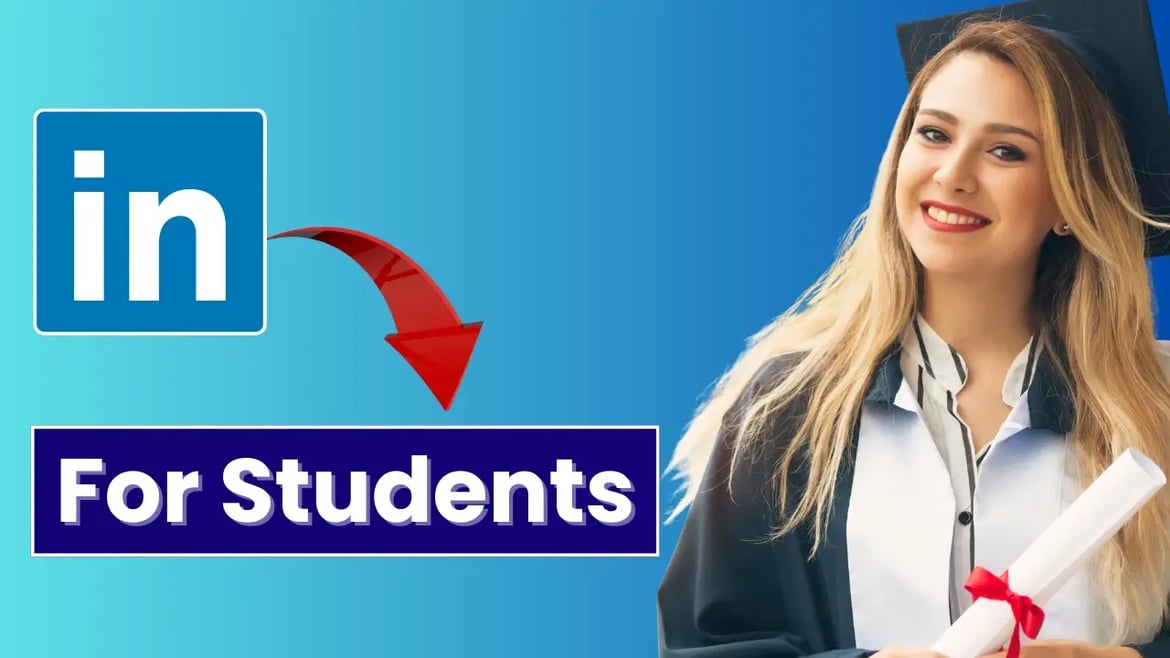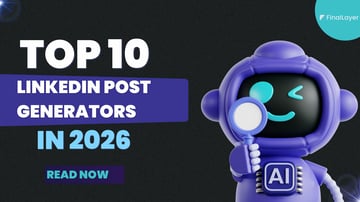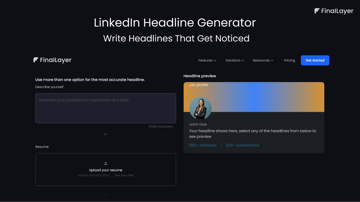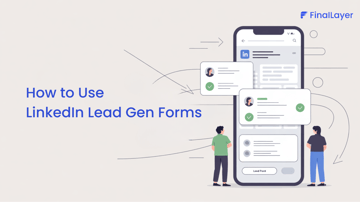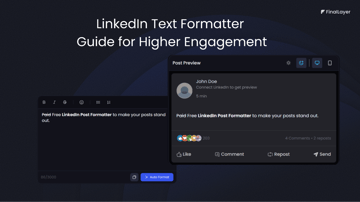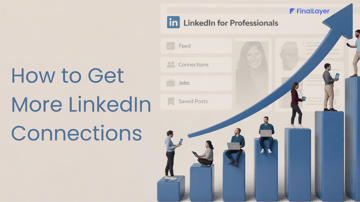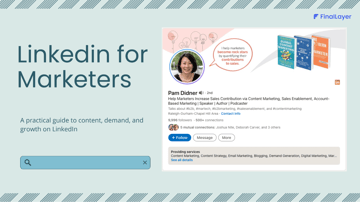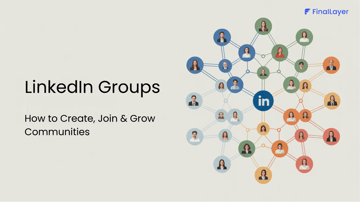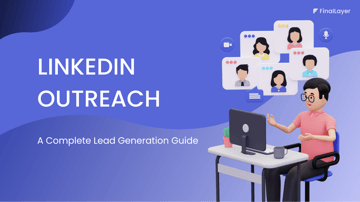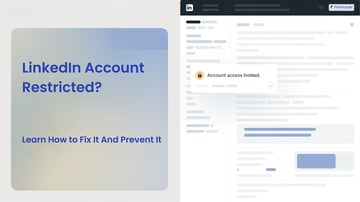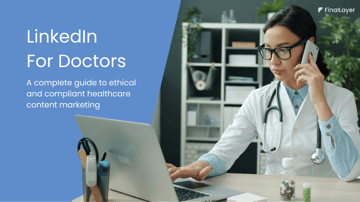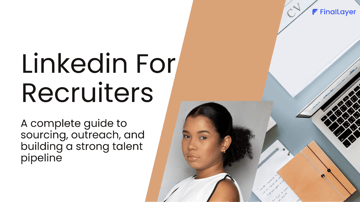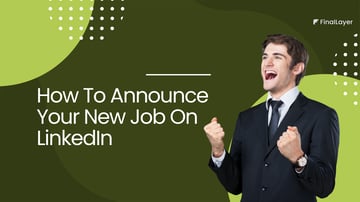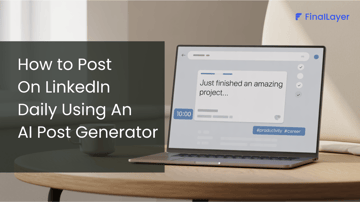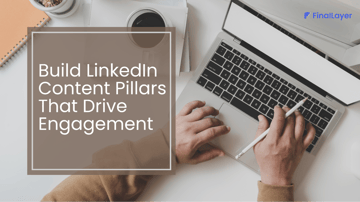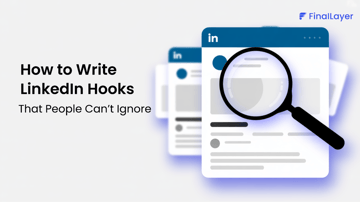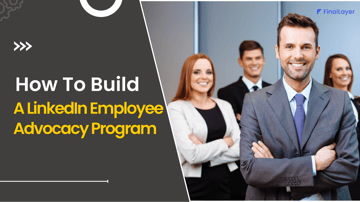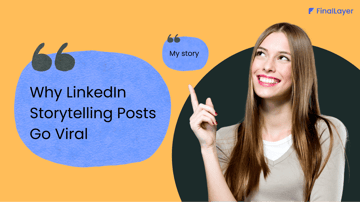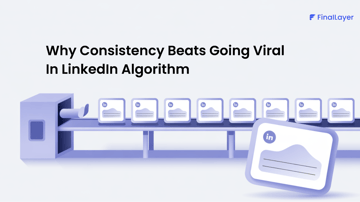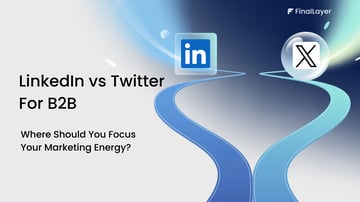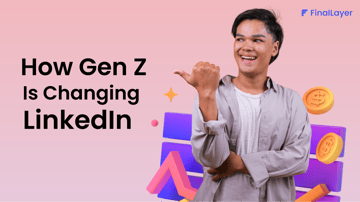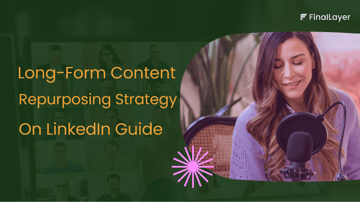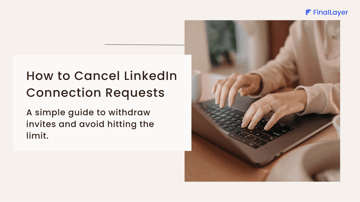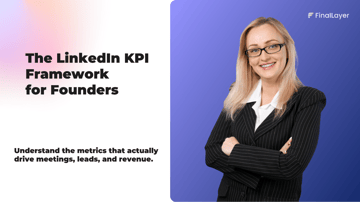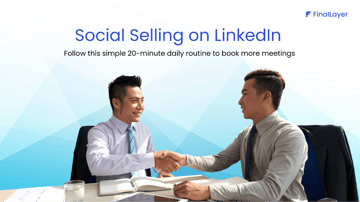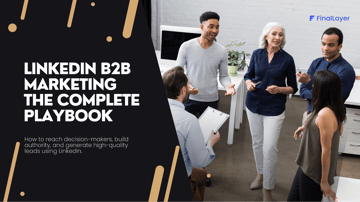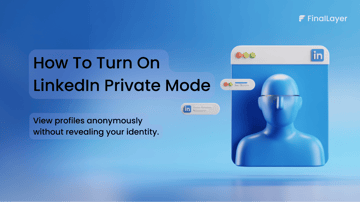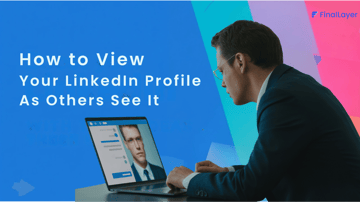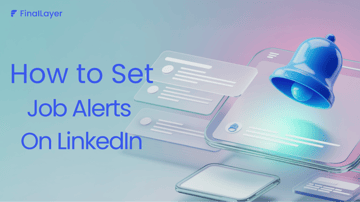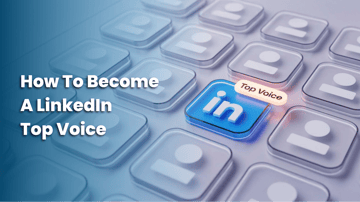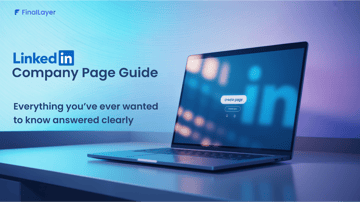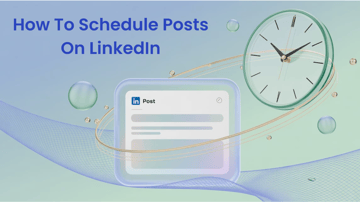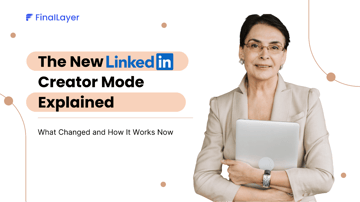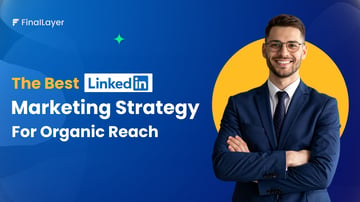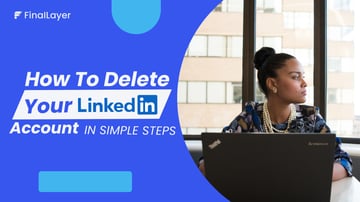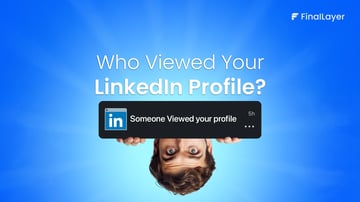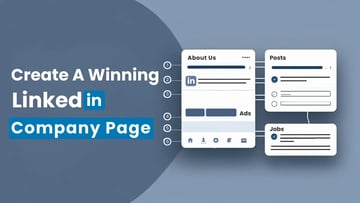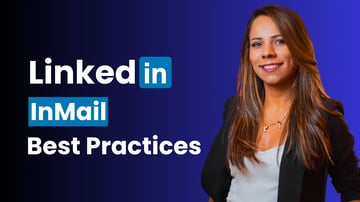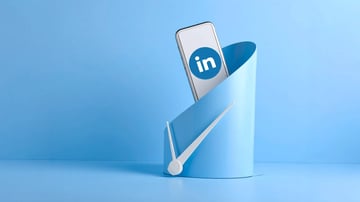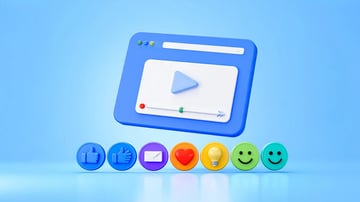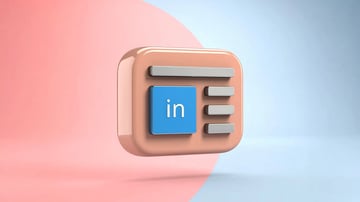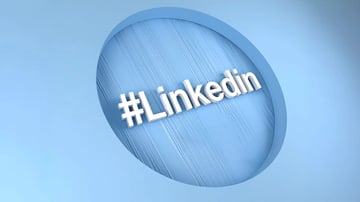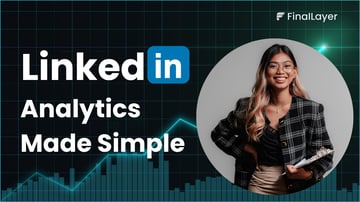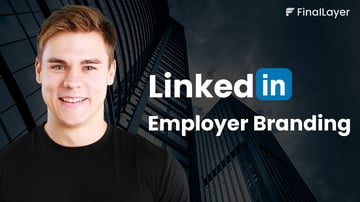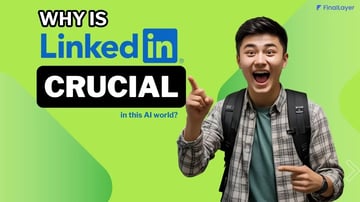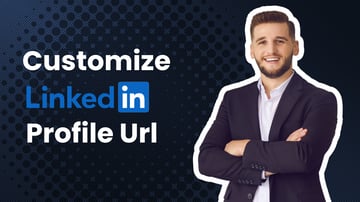Most students think LinkedIn is for after graduation. They're wrong. The students getting the best internships, connecting with industry leaders, and landing job offers before senior year all have one thing in common: they started using LinkedIn early.
While everyone else sends applications into the void, LinkedIn users get messages from recruiters. While others wonder how to network, they're already connected to professionals in their field. While classmates stress about finding opportunities, LinkedIn has made them discoverable to employers.
LinkedIn isn't complicated. It's not about being fake or overly professional. It's simply about presenting yourself well and connecting with the right people online.
Here's why you should start using LinkedIn as a student and exactly how to do it right.
LinkedIn's official insights on why students should start building their professional network early in their academic journey.
9 Reasons LinkedIn Can Change Your Student Life
1. Get Internships Before They're Posted
70% of internships are never publicly posted. Companies find candidates through LinkedIn searches and employee referrals. When you're active on LinkedIn, you become discoverable for these "hidden" opportunities.
2. Alumni Will Actually Help You
Your university's alumni network is worth millions in career opportunities, but 95% of students never tap into it. LinkedIn makes alumni accessible, and they actually want to help, if you approach them correctly.
Alumni are 5x more likely to respond to LinkedIn messages than cold emails. They remember being in your shoes and often become lifelong mentors.
3. Professors Will Notice You
When professors see you actively engaging with industry content on LinkedIn, their perception of you changes from "just another student" to "someone serious about their career." This leads to research opportunities, recommendation letters, and exclusive job referrals.
Professors often have direct connections to industry leaders. When they see you're professionally minded on LinkedIn, they'll think of you first for opportunities.
4. Build Your Personal Brand While Everyone Else Stays Invisible
Regular posting on LinkedIn builds your professional reputation before you even graduate. While your classmates are still trying to "find themselves," you're already known in your industry.
The compound effect will be that each post compounds your visibility.
5. Get Paid More From Day One
LinkedIn's salary insights show exactly what companies pay for different roles. Students who research compensation early often negotiate 15-30% higher starting salaries than those who don't.
Students who start networking early advance faster. Your LinkedIn connections become your referral network, advisory board, and future business partners.
6. Learn Skills That Actually Matter
LinkedIn Learning offers 16,700+ courses, but here's the key: you can see exactly which skills are trending in job postings. Focus your learning on what employers actually want, not just what sounds interesting.
Complete courses aligned with job requirements, add certificates to your profile, and post about your learning journey. This creates a documented skill development track record.
7. Get Information About Companies
Before applying anywhere, you can research company culture, recent developments, and even your potential interviewers. This preparation often makes the difference between getting rejected and getting hired.
When you mention specific company insights from LinkedIn during interviews, you demonstrate genuine interest and research skills that impress hiring managers.
8. Turn Your Part-Time Job Into Career Capital
A restaurant job or retail position? LinkedIn helps you frame these experiences in terms of valuable transferable skills. Customer service becomes "client relationship management." Handling busy shifts becomes "performance under pressure."
Your work experience sounds professional when described correctly on LinkedIn, changing how employers view your background.
9. Stay Ahead of Industry Trends
Your LinkedIn feed becomes a curated industry news source.
You'll know about trends, company developments, and opportunities before your classmates, giving you a massive advantage in conversations and interviews.
As your network grows, your access to insider information multiplies exponentially.
Complete LinkedIn Profile Building Guide for Students
Ready to build a profile that gets noticed? This step-by-step guide will help you create a professional presence that attracts opportunities.
1. Professional Profile Picture
- Use a high-quality headshot with good lighting
- Dress professionally but approachably
- Smile genuinely and make eye contact with the camera
- Avoid group photos, selfies, or casual settings
2. Compelling Professional Headline
Your headline appears below your name and is crucial for searchability. Here are proven LinkedIn headline examples for students across different majors:
Business & Marketing:
- "Marketing Student | Social Media Manager | Seeking Digital Marketing Internship"
- "Business Administration Student | Sales Associate | Future Business Analyst"
- "MBA Candidate | Consultant | Specializing in Strategy & Operations"
STEM Fields:
- "Computer Science Student | Full-Stack Developer | Python & React Enthusiast"
- "Engineering Student | CAD Designer | Pursuing Mechanical Engineering Roles"
- "Data Science Student | Analytics Intern | Machine Learning Passionate"
Liberal Arts:
- "English Major | Content Writer | Pursuing Journalism Opportunities"
- "Psychology Student | Research Assistant | Future Clinical Psychologist"
- "Political Science Student | Campaign Volunteer | Aspiring Policy Analyst"
Recent Graduate Headlines:
- "Recent Business Graduate | Marketing Certified | Ready to Drive Revenue Growth"
- "New Computer Science Graduate | Software Engineer | Available for Immediate Hire"
- "Fresh Marketing Graduate | Digital Strategy Focused | Seeking Growth Opportunities"
Career Changer Headlines:
- "Career Changer | MBA Student | Transitioning from Teaching to Business Analysis"
- "Professional Transitioning to Tech | Coding Bootcamp Graduate | Seeking Developer Role"
3. LinkedIn Summary/About Section
Template for Current Students:
"Passionate [major] student at [University] with hands-on experience in [relevant area]. Through my work as [position/role], I've developed strong skills in [specific skills]. I'm particularly interested in [career focus] and always eager to connect with professionals who share my enthusiasm for [industry/field]. Currently seeking [internship/entry-level] opportunities where I can apply my knowledge of [relevant skills/coursework] while continuing to learn and grow in [target industry]."
Template for Students with Experience:
"[Major] student combining academic excellence with practical experience in [field]. As [current role] at [organization], I've [specific achievement or responsibility]. My coursework in [relevant courses] has given me a strong foundation in [skills/knowledge area].
I'm passionate about [specific interest] and looking to leverage my background in [area] to contribute to [target industry]. Always open to networking and learning from industry professionals."
Short LinkedIn Bio for Students:
"Driven [major] student passionate about [field]. Experienced in [skills/activities]. Always eager to learn and connect with industry professionals."
4. What to Put in the LinkedIn Industry as a Student
Choosing the right industry is crucial for discoverability:
For Undecided Students:
Select "Higher Education" or your target industry
Business Students
Choose a specific focus like "Marketing," "Finance," "Management Consulting"
Tech Students:
Select "Information Technology," "Computer Software," or "Internet."
Liberal Arts:
Choose based on career goals, not major (e.g., "Marketing" for brand management interest).
5. Education Section Optimization
- Include the expected graduation date
- Add relevant coursework, GPA (if 3.5+), honors
- Mention thesis topics, significant projects
- Include study abroad experiences
6. Experience Section for Students What to Include:
- Internships (paid and unpaid)
- Part-time jobs (frame with transferable skills)
- Volunteer work and leadership roles
- Significant course projects
- Research experience
- Freelance work
How to Frame Part-Time Work:
- Retail → "Customer Service Representative"
- Restaurant → "Team Member specializing in customer experience"
- Tutoring → "Academic Mentor and Learning Specialist"
7. Skills Section Strategy Add 10-15 relevant skills including:
- Technical skills from coursework
- Software proficiency
- Language abilities
- Industry-specific skills
- Soft skills like "Leadership" and "Communication"
Strategic Networking for Students
Connect Strategically
Connect with classmates, professors, and family members in professional roles.
Use your school's alumni search to find people in your target industry. Send personalized requests to connect.
Post 2-3 times per week
Share learning insights, industry observations, and project updates. Engage meaningfully with your connections. Comment thoughtfully on others' posts. This multiplies your visibility. Join conversations and participate in industry groups and discussions.
What to Post as a Student (With Examples)
Being a student, you always feel overwhelmed about what to post. But don’t worry I have a solution for it. But before going to that solution, let's first see some examples of what to post.
Learning Updates:
"I just completed my first data analysis project using Python. Fascinating how visualization can change data interpretation..."
Industry Insights:
"Interesting article about AI in marketing. As someone studying digital marketing, I'm curious how this will impact entry-level roles..."
Project Showcases:
"Wrapped up our semester consulting project with [Local Business]. Key takeaway: small businesses need simple, actionable digital strategies..."
Course Connections:
"Professor just connected game theory concepts to business strategy. Never realized how academic concepts directly apply to real decisions..."
Building Your Personal Brand with FinalLayer
So, let’s talk about the solution. The ground reality is that creating consistent content challenges every busy student and finding time for thoughtful LinkedIn posts becomes overwhelming between classes, jobs, and social life.
But FinalLayer solves this problem completely by:
- Automating the post-creation process.
- Topic suggestions according to your interests or profile.
- Personalized tone that sounds authentically like you
- Integration of a relevant video clip into your post to make it more engaging.
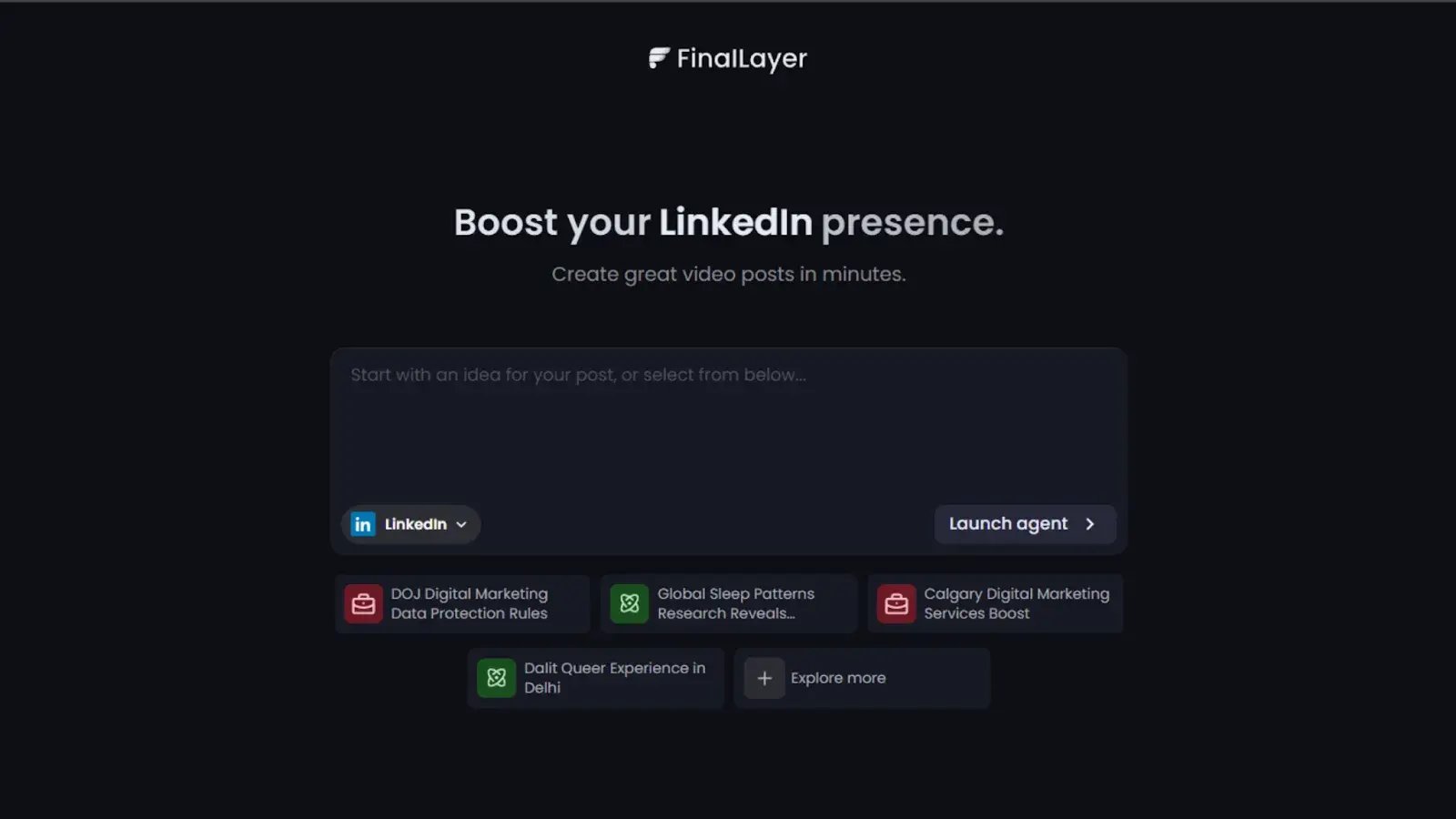
FinalLayer is very easy to use. In less than five minutes a day, you can maintain a consistent professional presence on LinkedIn. You get thought leadership benefits without the time investment, building your network and visibility effortlessly.
Anjan Sairaj P is one of the students who tried FinalLayer. He just passed his senior secondary examination and is entering his graduation. He found that as he started posting his insights on the different concepts of AI/ ML, as well as recent updates about his industry, many senior-level professionals started reaching out to him.
They found his post insightful and engaging. Seeing that he is feeling very confident about his future job placement, as he has already started building his place among the professionals of his industry without spending hours and hours just crafting a LinkedIn post and compromising on his studies.
Common Student Objections (And Why They're Wrong)
"I don't have enough experience to post about"
Wrong. Your fresh perspective is valuable. Share learning insights, course connections, and industry observations. Students often bring unique viewpoints that professionals appreciate.
"It takes too much time."
Active LinkedIn presence requires 30 minutes per week. That's less time than you spend on TikTok daily, but with infinitely better career ROI. Even better, with platforms like FinalLayer, this becomes a task of less than 5 minutes per week.
You'll actually start enjoying the process as you watch your impressions grow and feel confident making meaningful connections with industry professionals.
"I'll do it after graduation."
This is backwards. Building your network takes time. Starting during college means graduating with established connections, not starting from zero.
"My professors might see unprofessional content."
LinkedIn is professional by design. Your posts will enhance your academic reputation, not hurt it.
Every day you wait is another day they get further ahead. The students who start building their LinkedIn presence today will have massive advantages when graduation arrives. They'll have networks, visibility, and opportunities that took years to build.
Start Today
LinkedIn isn't just another social media platform, it's the most powerful tool for launching your career while you're still in school. The students who understand this early consistently outperform their peers in every career metric: internship placement, starting salaries, job satisfaction, and career advancement speed.
The question isn't whether you should be on LinkedIn. The question is: how much longer can you afford not to be?
